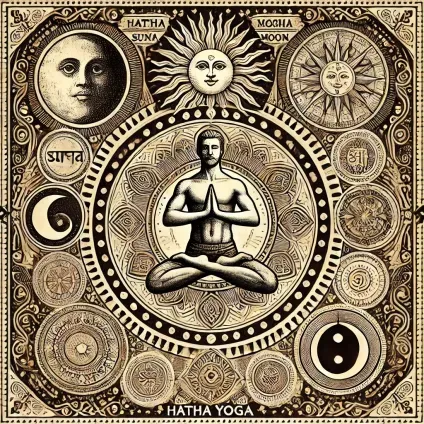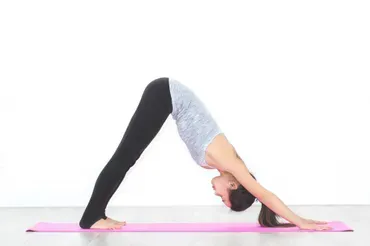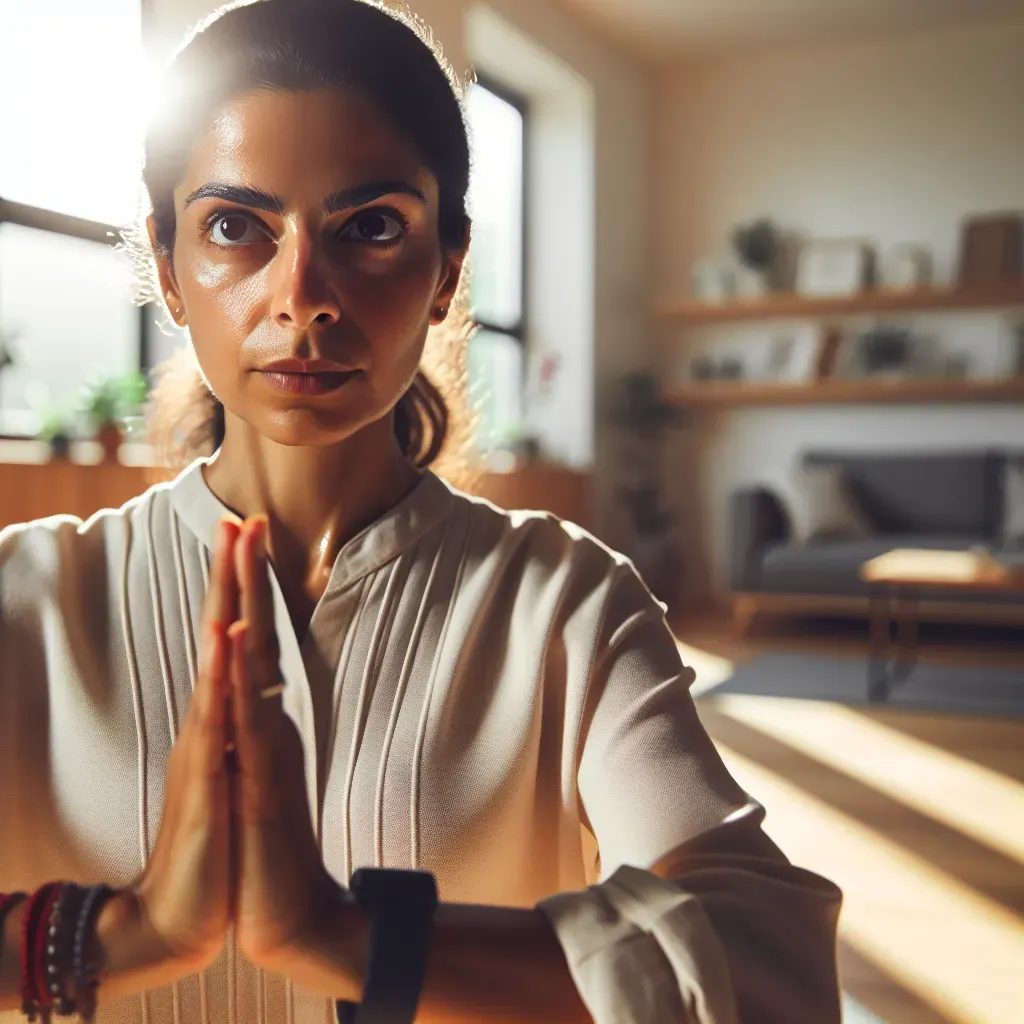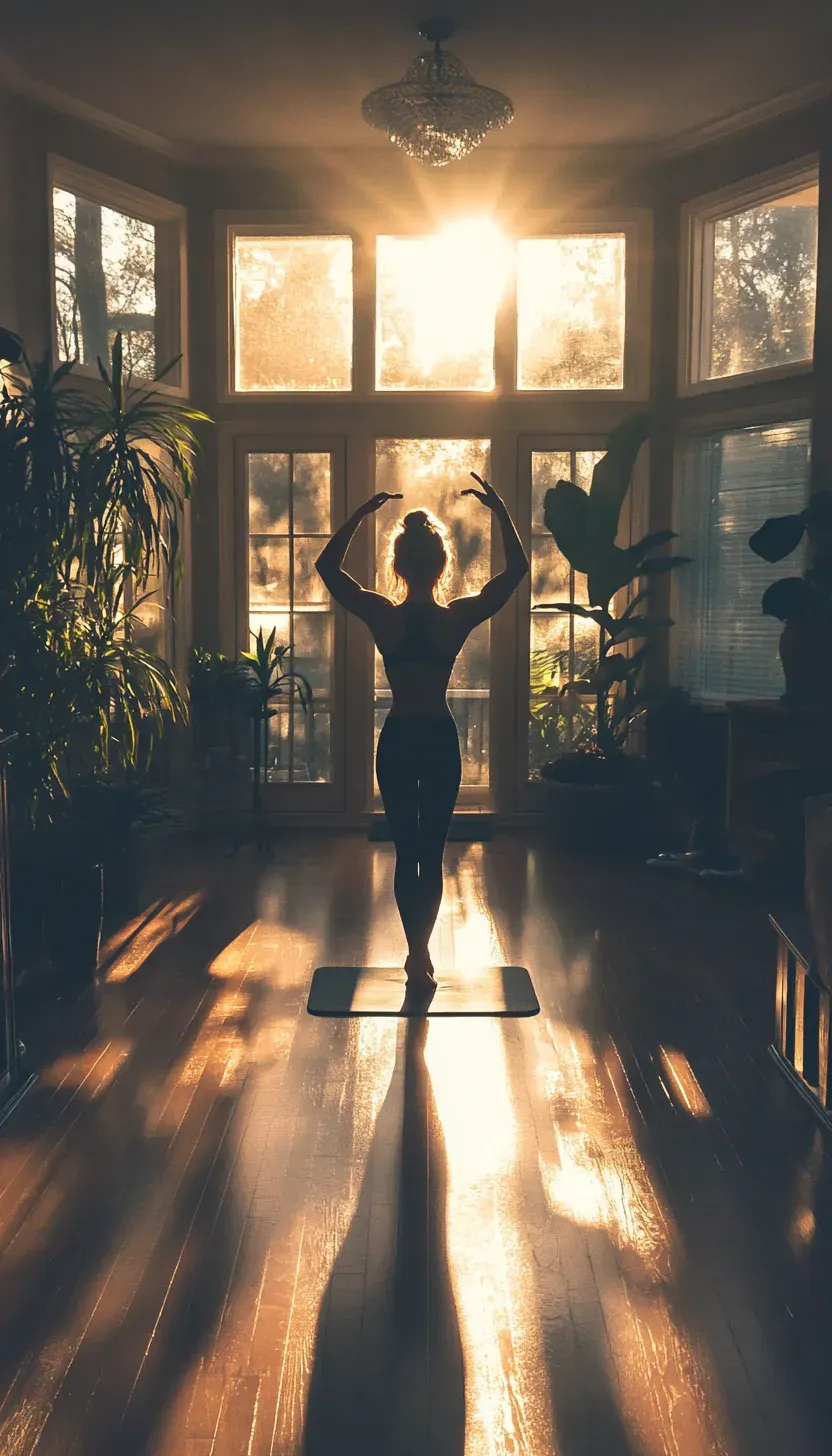Hatha Vinyasa Flow Yoga: The Meaning Behind This Dynamic Practice
Table of Contents:
- Introduction to Hatha Vinyasa Flow Yoga
- Meaning and Origins of Hatha Vinyasa Flow Yoga
- Origins and Significance of Vinyasa in Hatha Yoga
- Key Differences Between Hatha and Vinyasa
- Benefits of Practicing Hatha Vinyasa Flow Yoga
- Class Structure in Hatha Vinyasa Flow Yoga
- Breath Control: The Heart of the Flow
- Common Poses in Hatha Vinyasa Flow Yoga
- Tips for Beginners in Hatha Vinyasa
- Embracing the Dynamic Journey of Hatha Vinyasa Flow Yoga
Understanding The Meaning Of Hatha Vinyasa Flow Yoga
Hatha Vinyasa Flow Yoga represents a beautiful synthesis of two powerful traditions. Within the yoga practice. Hatha is rooted in physical postures and alignment. Emphasizes the importance of stillness and strength, making it incredibly accessible for beginners.
It is an entry point for those new to yoga, offering foundational techniques. That promotes inner awareness while harmonizing body and breath.
Meanwhile, Vinyasa weaves these postures into a dynamic flow, igniting energy and cultivating a sense of rhythm that can transform the experience from static to vibrant.
What makes Hatha Vinyasa particularly appealing is its adaptability. Practitioners can tailor their sessions based on personal needs and daily moods. This fluidity fosters not only physical flexibility. But also mental agility that beginning yogis may find themselves more attuned to. Their limits And capabilities through this evolving practice.
The interplay between structured posture work in Hatha and creative sequencing in Vinyasa. Encourages mindfulness while deepening one’s connection to both self and surroundings. Transforming each session into an exploration of possibility rather than mere exercise.
In doing so, it invites practitioners at all levels to discover a deeper level of peace. And balance within themselves.
What Are Hatha Vinyasa Flow Yoga's Meaning And Origins?
Hatha Vinyasa Flow Yoga is an intricate dance between the ancient and the modern. Weaving together various elements from its rich philosophical heritage. Hatha originates from Sanskrit, where “ha” signifies the sun. And “tha” represents the moon, symbolizing a harmonious balance of opposing forces.
This aspect highlights yoga's essence: uniting body and mind. Through physical postures (asanas), breath control (pranayama), and meditation. Meanwhile, Vinyasa translates to “to place especially. Emphasizes dynamic movement that connects asanas through breath creating a fluid, meditative experience.
The origins of Hatha Vinyasa can be traced back to classic texts like the Hatha Yoga Pradipika. And teachings from influential yogis who sought to make traditional practices more accessible.
Over time, this evolved into a contemporary format tailored to modern practitioners. Looking for both intensity and mindfulness.
This practice encourages not only physical strength but also deep introspection. Allowing individuals to explore their internal landscapes. While navigating through sequences that challenge their flexibility and focus.
Embracing both vigour and serenity. Hatha Vinyasa Flow serves as an invitation for practitioners to connect with themselves. On many levels physically invigorating yet profoundly calming. A true reflection of life’s dichotomies.
Exploring The Origins And Meaning Of Vinyasa In Hatha Yoga

Vinyasa, derived from the Sanskrit word nyasa, meaning place, represents a dynamic method of linking breath with movement in Hatha Yoga.
This fluidity encourages practitioners to transition seamlessly between poses, creating a meditative rhythm that not only enhances physical endurance but also fosters mental clarity.
Unlike static postures traditionally found in Hatha Yoga, Vinyasa invites an exploration of personal expression each practice becomes a unique tapestry woven together by individual energy and intention.
Moreover, the concept of Vinyasa extends beyond mere movement; it embodies the philosophy of continuous flow and change inherent in life itself. This dynamic practice serves as a reminder that just as breath fuels our movements, so too does adaptability enhance our daily experiences.
By embracing this perspective, practitioners cultivate resilience and embrace spontaneity both on the mat and off a beautiful dance reflecting life's ebb and flow amidst challenges and triumphs alike.
Exploring these layers adds depth to our understanding of yoga, highlighting that every sequence can be seen as an opportunity for growth and transformation.
Key Differences To Understand Hatha Vinyasa Flow Yoga Meaning
Hatha Vinyasa Flow Yoga marries the static quality of Hatha poses with the rhythmic flow characteristic of Vinyasa, creating a dynamic sequence that emphasizes both strength and flexibility.
While Hatha traditionally focuses on holding postures for longer durations to develop alignment and stability, Vinyasa encourages a fluid transition from one pose to another, imbuing each practice with an element of dance.
Understanding this interplay opens doors to deeper engagement; practitioners can explore the contrasts between stillness and movement, finding a balance that is both invigorating and grounding.
Another key difference lies in the breath's role within these two styles. In Hatha yoga, breathing tends to remain steady as you hold poses, allowing for introspection and mindfulness.
In contrast, Vinyasa flow links breath with movement seamlessly each inhale guiding you into a new shape while each exhale invites you back into your center.
This connection not only enhances physical endurance but also cultivates emotional resilience as practitioners learn to navigate challenges on and off the mat through conscious breathing techniques.
Ultimately, embracing Hatha Vinyasa Flow Yoga means appreciating how these styles complement each other: Hatha’s steadiness supports deep awareness while Vinyasa’s vitality ignites passion for practice.
As students move fluidly through sequences infused with mindful pauses, they discover their unique rhythm, an invaluable lesson in yoga and life.
Benefits Of Practicing Hatha Vinyasa Flow Yoga
Hatha Vinyasa Flow Yoga offers practitioners a unique blend of strength and serenity, inviting a profound connection between breath and movement. This dynamic practice emphasizes fluid transitions, allowing the body to flow gracefully from one asana to the next.
As each posture is synchronized with the breath, participants cultivate mindfulness an essential component for fostering mental clarity and reducing stress.
The rhythm created in Hatha Vinyasa also encourages a meditative state, turning an ordinary workout into an enlightening experience that nurtures both physical resilience and emotional stability.
Beyond its physical benefits, practicing Hatha Vinyasa Flow can awaken one's inner self-awareness. Each session serves as a reminder to embrace both challenges and triumphs on the mat, reflecting life’s ups and downs.
This yoga style invites individuals to explore their limits while remaining attuned to their bodies’ needs, encouraging personal growth beyond just flexibility or strength.
It becomes a journey of discovery where every flow not only tones muscles but also unveils deeper layers of self-acceptance and empowerment an inspiring testament to how movement can heal both body and mind in harmony.
Typical Class Structure In Hatha Vinyasa Flow Yoga
In a typical Hatha Vinyasa Flow yoga class, the rhythm of breath and movement creates a dynamic tapestry that elevates both physical and mental states. Classes often begin with grounding exercises designed to connect practitioners to their bodies and establish mindfulness.
As students settle into the space, they transition into sun salutations fluid sequences that warm up the body while inviting an expansive sense of freedom. This initial phase is vital, for it cultivates not just flexibility in muscles but also fluidity in the mind.
As the class progresses, postures flow seamlessly from one to another, embodying the essence of Vinyasa: “to place specially.” Each asana builds upon its predecessor, creating a narrative where strength meets grace.
Emphasis on the breath whether chaturanga or calming forward folds serves as an anchor amid this graceful dance, reminding practitioners that each inhale can empower and each exhale to release tension.
Towards the culmination of practice lies deeper stretches or balancing poses which encourage introspection; these moments invite students to explore their boundaries while fostering resilience within.
Finally, classes typically conclude with restorative poses and guided meditation a tranquil contrast designed to integrate both body and mind. This gentle denouement not only reinforces relaxation but encourages participants to reflect on their experiences throughout the session.
In this way, Hatha Vinyasa Flow is much more than just physical exercise; it's an evolving journey towards self-discovery that invites practitioners into profound spaces within themselves long after they leave their mats.
Breath Control In Hatha Vinyasa Flow Yoga: The Essence And Meaning Of Flow
Breath control, or pranayama, is the heartbeat of Hatha Vinyasa Flow Yoga, weaving together movement and stillness in a seamless tapestry of connection.
As beginners often discover, the practice invites us to slow down and attune our awareness to each inhale and exhale. This conscious breathing serves not only as an anchor during dynamic sequences but also as a gateway to deeper self-discovery.
By focusing on the breath, practitioners can transform their yoga a physical discipline into a profound meditative journey that quiets the mind and nourishes the spirit.
As we flow through poses like downward dog and warrior I, attention to breath encourages us to let go of rigid expectations and tune into what our bodies need at that moment.
This fluid dialogue between motion and breath creates an experience that is not just about mastering techniques but about embracing vulnerability the essence of true growth.
Beginners may find that as they cultivate this intentional breathing pattern, their sensitivity increases: they become better equipped to recognize areas of tension while simultaneously cultivating a sense of grounding amidst life's turbulence.
In effect, this integration promises not only physical strength but emotional resilience a fundamental pillar for those starting their yoga journey.
Common Poses Reflecting Hatha Vinyasa Flow Yoga Meaning
Hatha Vinyasa Flow Yoga seamlessly marries the tranquillity of static postures with the dynamic rhythm of breath, creating a fluid motion that transforms not only the body but also the mind.
Common poses such as Downward Dog (Adho Mukha Svanasana) and Warrior II (Virabhadrasana II) embody this interplay, inviting practitioners to experience strength alongside surrender.

In Downward Dog, one can cultivate a sense of grounding while simultaneously reaching for greater heights literally and metaphorically through elongation and extension with each inhale.
Warrior II further exemplifies this philosophy by emphasizing stability in action; it encourages practitioners to find their centre even amidst movement. The pose's broader stance symbolizes resilience against life's challenges, instilling both confidence and focus.
As we flow through these postures, each transition serves as an opportunity to synchronize our movements with our breath, fostering mindfulness that penetrates far beyond the mat.
In doing so, Hatha Vinyasa doesn't just promote physical wellness it empowers us to cultivate inner peace and intentionality in every aspect of our lives.
Tips For Beginners Exploring Hatha Vinyasa Flow Yoga Meaning
Hatha Vinyasa Flow Yoga beautifully marries the stability of Hatha with the fluidity of Vinyasa, creating a dynamic practice that encourages both strength and grace.
For beginners, it’s essential to approach this style with an open mind and heart. One of the best tips is to cultivate mindfulness on the mat; pay attention not just to your movements but also to your breath.
Synchronizing breath and motion enhances concentration and establishes a sense of rhythm, making transitions feel more natural.
Another key aspect is embracing adaptability. Each individual’s body has its unique limitations and capabilities, so don’t hesitate to modify poses when needed. Using props like blocks or straps can provide extra support while you build strength over time think of them as tools for enhancing your practice rather than crutches.
Finally, be patient with yourself; progress in yoga isn’t always linear, but each session is an opportunity for growth, both physically and mentally. Celebrate every small achievement along your journey.
Embracing The Dynamic Journey Of Hatha Vinyasa Flow Yoga
In embracing the dynamic journey of Hatha Vinyasa Flow Yoga, practitioners discover that every breath and movement is an exploration of self. This practice transcends mere physicality; it becomes a harmonious dialogue between body, mind, and spirit.
Each fluid transition invites you to witness your inner landscape, revealing layers of resilience and vulnerability. It’s not just about mastering poses but about cultivating awareness allowing yourself to feel each moment as it unfolds.
As you flow through this ancient discipline, you tap into an innate rhythm that resonates beyond the mat.
The synergy of Hatha's grounded strength with Vinyasa's fluid grace encourages adaptability in both posture and life’s challenges. This interplay teaches us that change is not something to resist but rather a current we can learn to navigate with ease and intention.
Ultimately, embracing the essence of Hatha Vinyasa Flow Yoga nurtures a deeper connection to oneself while fostering compassion for others on their unique journeys a beautiful reminder that we’re all flowing together in this dance called life.
Learn about different styles in What is Slow Flow Vinyasa Yoga?.
People Also Asked Section
- What is Hatha Vinyasa Flow Yoga?
- Hatha Vinyasa Flow Yoga is a practice of blending static Hatha postures with the dynamic, rhythmic sequences of Vinyasa.
- What are the benefits of Hatha Vinyasa Flow Yoga?
- It builds flexibility, physical endurance, and mental clarity while nurturing a deeper body-mind connection.
- Is Hatha Vinyasa Flow Yoga good for beginners?
- Yes, it’s accessible for beginners due to the slower pace and emphasis on alignment and breath.
- How is Hatha Vinyasa different from regular Hatha yoga?
- While Hatha emphasizes static holds, Hatha Vinyasa incorporates flowing transitions that connect each pose.
- Can Hatha Vinyasa Flow improve mental health?
- Yes, it fosters mindfulness, reduces stress, and promotes emotional resilience.
- What does Vinyasa mean in yoga?
- Vinyasa translates to “to place especially,” symbolizing the breath-linked transitions between poses.
- Why is breath control important in Hatha Vinyasa Yoga?
- Breath control enhances focus, stabilizes posture, and deepens the meditative experience of each practice.
- Are props useful in Hatha Vinyasa Yoga?
- Props can assist in poses, making the practice more adaptable for all body types and skill levels.
- What are common poses in Hatha Vinyasa Flow Yoga?
- Key poses include Downward Dog, Warrior II, and Sun Salutations, blending strength with flexibility.
- What should beginners focus on in Hatha Vinyasa Flow?
- Beginners should focus on aligning breath with movement and practicing mindfulness in each transition.





